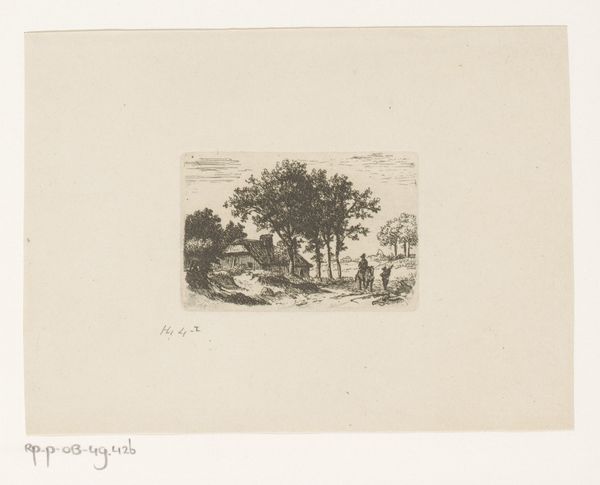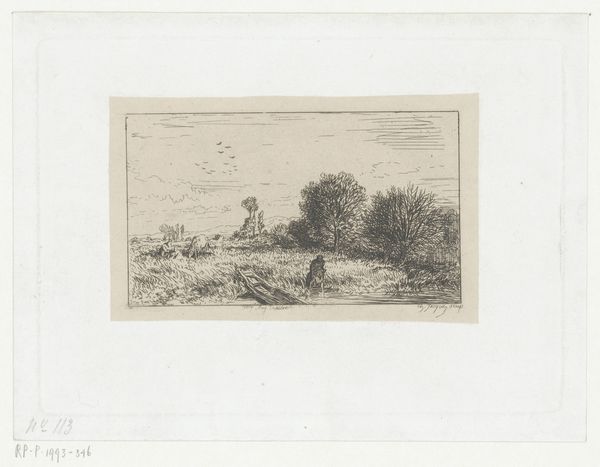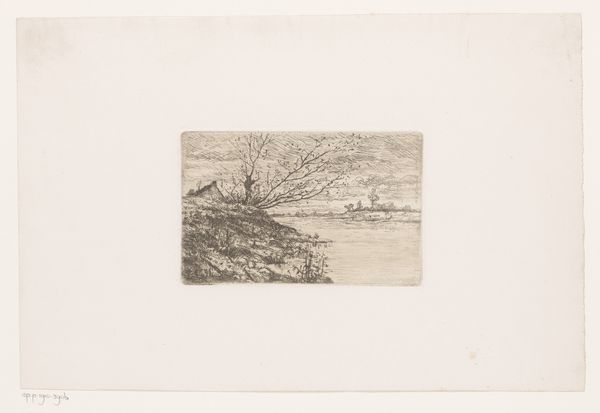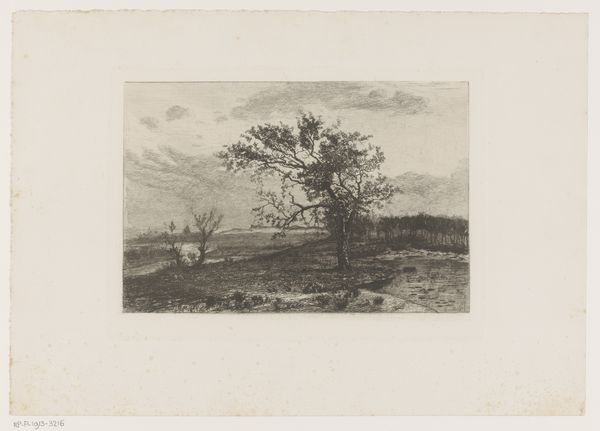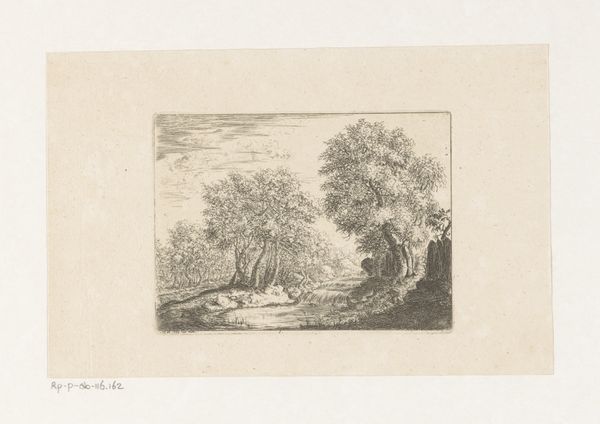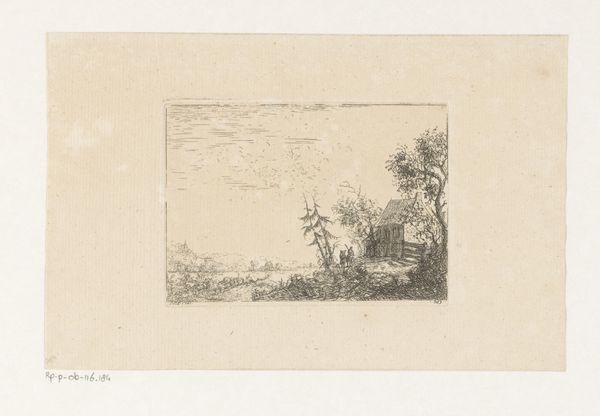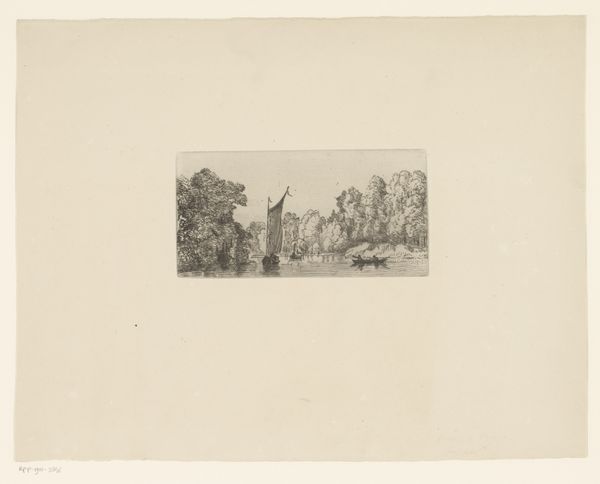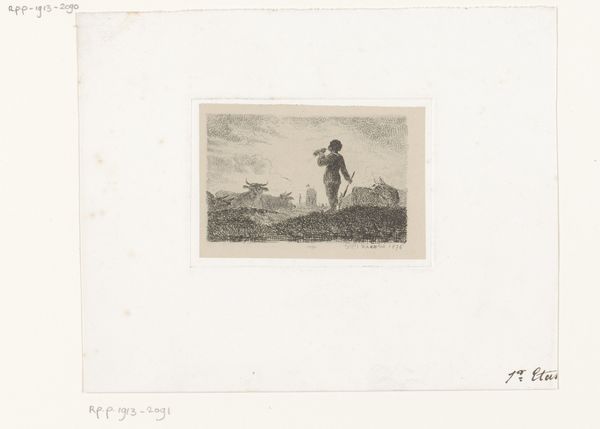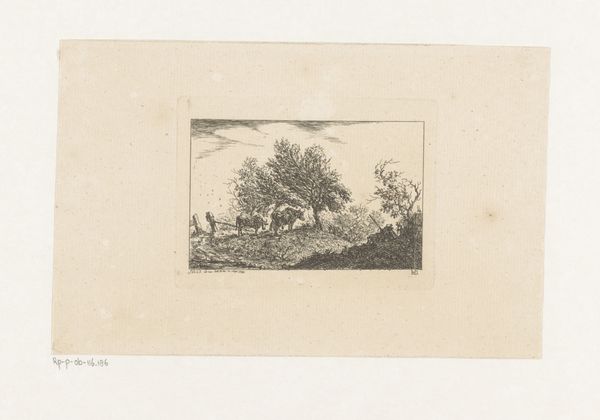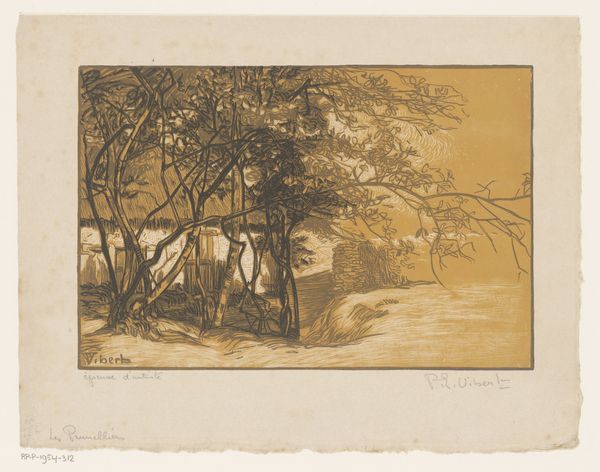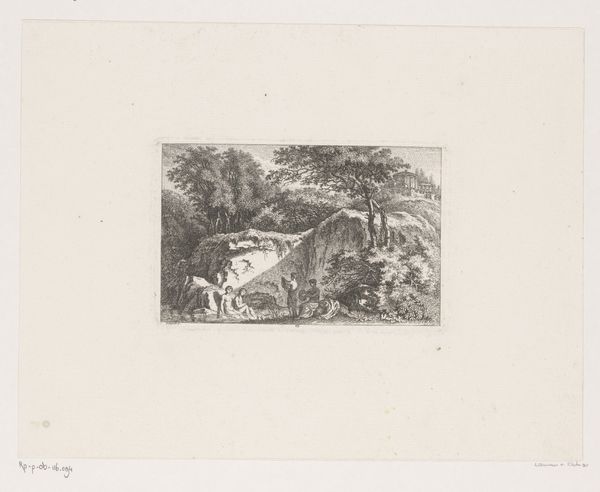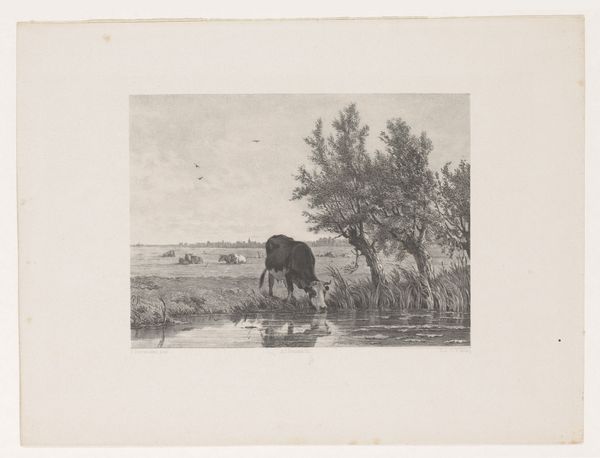
Landschap met ruiter en bedelaarster 1799 - 1874
0:00
0:00
print, etching
# print
#
etching
#
old engraving style
#
landscape
#
form
#
road
#
romanticism
#
line
Dimensions: height 48 mm, width 94 mm
Copyright: Rijks Museum: Open Domain
Curator: Hendrik Jozef Franciscus van der Poorten's etching, "Landschap met ruiter en bedelaarster," which roughly translates to "Landscape with Rider and Beggar Woman," likely produced sometime between 1799 and 1874, presents a concise snapshot of social dynamics through a distinctly Romantic lens. Editor: It's funny how much can be communicated with just lines! There’s such quietness, even a touch of melancholy, evoked by those delicate strokes forming the scene. That lone tree against the horizon...almost a character in itself, don’t you think? Curator: Absolutely. The linear precision, typical of etching, serves to highlight the detailed forms. Notice the composition. It stages the rider and beggar woman against a vast landscape. These were figures often romanticized in art, standing in contrast, yet bound to one another. The very act of image-making at this time served to assert specific viewpoints about class and place. Editor: Definitely get that. The rider seems detached somehow, towering above the beggar, on the back of their stead, which really plays up the economic differences. Makes me think of a sort of narrative, a brief encounter frozen in time. A moral story maybe, rendered without judgment but with plain eyes to those social classes, no frills. Curator: Precisely, Van der Poorten’s position, typical among landscape artists of the era, was less about direct critique and more a nuanced observation. The etching method allows a distribution, creating an easily circulated observation to broader society, which plays with the popular imagination of Romantic era ideas about social stratification and land. Editor: I see it now; its distribution almost levels them, both reduced to lines on paper, like an admission that social structures of class is as flimsy as the etching itself... Still, what intrigues me most is the lack of grandeur in what can sometimes seem like an escapist genre. There's this strange sort of humbleness or realness, even—far cry from those epic landscape paintings, don’t you think? Curator: A valuable insight, its modest format emphasizes a different encounter with art. With "Landschap met ruiter en bedelaarster," we are witnessing an intimate encounter with Romantic ideals of that time period: simplified, condensed, and eminently reproducible to be carried and appreciated broadly. Editor: It's funny, but seeing it now makes me ponder my own brief time here and the endless stories the Rijksmuseum's walls guard inside of it. Curator: It truly underlines the layers of context, and continued public roles artworks can gain in their exhibition here at the Rijksmuseum.
Comments
No comments
Be the first to comment and join the conversation on the ultimate creative platform.
